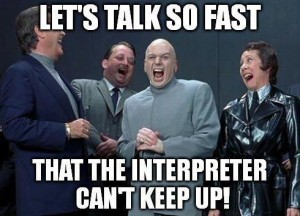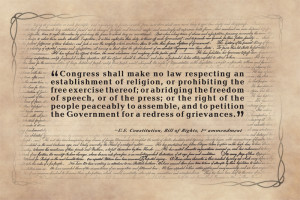You know that uneasy feeling that you may have made a mistake in your interpreting or legal translation ? You aren’t sure if anyone caught your mistake since you haven’t received a complaint…yet. Maybe while you were interpreting in a deposition, an attorney objected and then asked to have a question and answer and your interpretation read back. Maybe it was an unfamiliar phrase repeated throughout a translation and every time you saw it, something bothered you about the term you were using. But you made the deadline and it is already in the hands of the client. In both cases, the more you think about it, the more you feel that you made a mistake. At this point, your conscious won’t leave you alone.
That sense is a good thing. It means you care about your work product.
When a mistake is discovered, here’s what’s probably going to happen on the client’s end.
If you were working for an agency, they will hear the complaint from their client. A professional agency should give you a chance to tell your side, so they will contact you and ask you about the job. Some will tell you exactly what the client complained about. If you work with the agency to help them rectify the problem, then you help them keep their client. If they keep that client, you have a better chance of staying on with the agency. If they have to resolve the problem without your help, you could easily lose them as a client. Often the agency will need to discount or not charge their fee to keep the client.
Fact: The agency can replace you with another freelancer much easier than they can replace a paying client.
Fact: Legal translation offered as evidence can be objected to in court if errors are found. The client they may send back the translation and ask for a correction. If you are at fault, don’t charge them.
Fact: Most interpreters don’t realize the repercussions to the client of misinterpreted testimony.
Fact: Many Court Interpreter Regulatory bodies have grievance protocols that can result in certification suspension or termination.
Interpreters may not hear complaints about mistakes they make at all. Lawyers are super busy and don’t like the task of questioning people about errors. But they do tell other lawyers about bad experiences with interpreters, which snowballs, and your reputation is shot. You will begin to notice that specific client doesn’t schedule you anymore. Then your overall work load drops off.
If your mistake affected their witness’s case, the firm has to act quickly and according to the rules of civil or criminal procedure. They may hire another interpreter to review the transcript and give an expert opinion on any errors. You won’t find out unless you are called to testify if a motion is made to throw out the transcript or statements in question.
Mistakes are made in your work or in your business performance too.
Being late and delaying a deposition costs both parties in time and money. Not making a deadline on a translation can set back the client’s production schedule. This is why clients react so strongly to mistakes we make.
Don’t spend time agonizing over a mistake. Instead take action to correct it and be honest and fair with the client.
When you work to resolve it, you will learn how to never make that mistake again.
Let’s go down Resolution Road together. Look for two more posts: what you can do to resolve a mistake and what to do when the client wrongly claims that you made a mistake.








